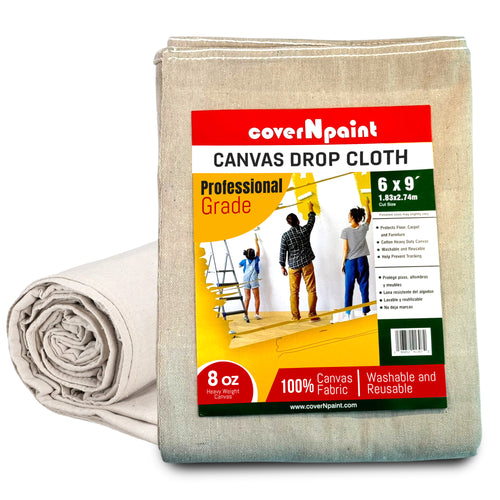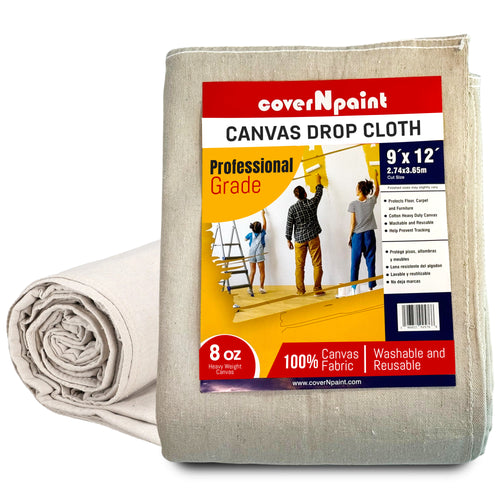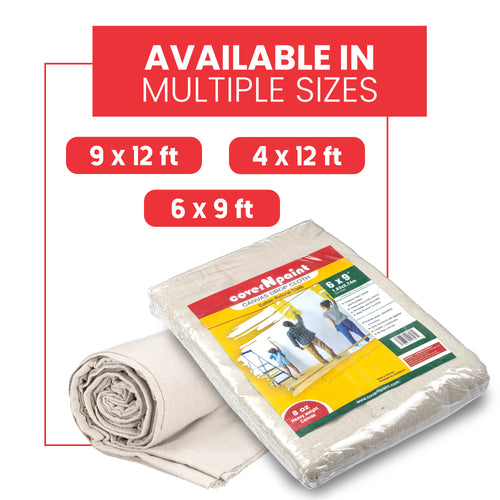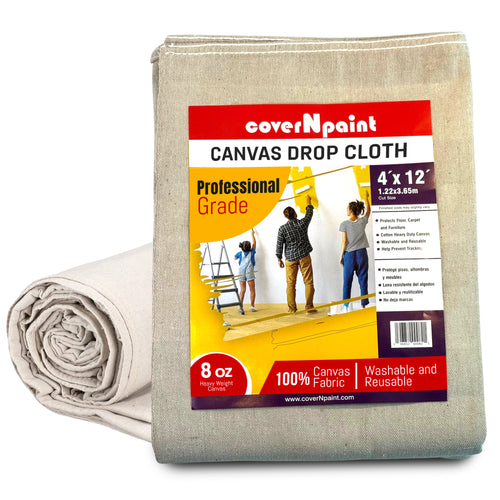Painting projects can transform your home, but they also come with safety concerns. One of the most overlooked hazards is improper use of painters drop cloths. While they protect floors and furniture from paint spills, they can become tripping or slipping hazards if not used correctly. This guide provides expert tips to ensure your painting project is both effective and safe.

Why Safety Matters When Using Painters Drop Cloths
Using a paint drop cloth incorrectly can lead to accidents ranging from minor slips to serious falls. Homeowners often underestimate the risk because drop cloths are designed for protection, not traction. Understanding how different materials behave on various surfaces is key to maintaining safety during any painting project.
Types of Drop Cloths and Their Safety Considerations
Canvas Drop Cloths
Canvas drop cloths are durable, heavy, and preferred by professionals. They are less likely to slide on hardwood or tiled floors because of their weight and textured weave. They also absorb minor spills, preventing puddles that could cause slipping.
Plastic Drop Cloths
Plastic drop cloths are lightweight and inexpensive but can easily shift or bunch up. They tend to be slippery, especially on smooth surfaces, increasing the risk of falls. If using a plastic drop cloth, secure it with painter’s tape or consider placing a heavier cloth on top.
Mixed Material Drop Cloths
Some drop cloths combine canvas and plastic layers, offering moderate durability and water resistance. These can be safer than thin plastic sheets, but still require careful positioning to avoid tripping hazards.
Common Risks Associated With Painters Drop Cloths
-
Slipping on Slick Surfaces
Plastic or lightweight drop cloths on hardwood or tile can slide unexpectedly. -
Tripping on Bunched or Folded Cloth
Improperly unfolded drop cloths create folds or wrinkles that can catch feet. -
Edge Hazards
Drop cloth edges left unsecured can lift and cause trips. -
Layering Hazards
Using multiple layers of cloth without flattening them can make uneven surfaces, increasing the risk of falls.
How to Prevent Slips, Trips, and Falls
1. Secure the Edges
Always tape the edges of your drop cloth using painter’s tape. This ensures that the cloth stays flat and prevents it from curling or moving during painting.
2. Smooth Out Wrinkles
Before starting, walk across the drop cloth and smooth any folds or creases. Wrinkles can easily catch toes and lead to trips.
3. Use the Right Cloth for the Surface
-
Canvas drop cloths are ideal for hardwood, tile, or uneven surfaces.
-
Plastic drop cloths should be used on carpets or surfaces where spills must not soak through.
4. Keep Pathways Clear
Avoid overlapping clothes in high-traffic areas. Maintain clear walking paths and move the cloth as you paint different sections.
5. Layer with Care
If multiple layers are necessary for heavy-duty projects, ensure each layer is flat and secured to minimize movement.
6. Use Non-Slip Backing
Some premium drop cloths feature non-slip backing. These provide extra grip and stability, especially on polished floors.
Room-Specific Tips for Drop Cloth Safety
Living Rooms
Furniture is often moved for painting, exposing uneven surfaces. Use heavy canvas drop cloths and secure them under legs to reduce shifting.
Kitchens
Tile floors can be slippery. Avoid thin plastic cloths alone; consider combining a canvas cloth with a thin protective plastic layer for water resistance without sacrificing safety.
Bedrooms
Soft floors may hide wrinkles. Smooth the drop cloths thoroughly, especially under beds and furniture, to prevent trips.
Hallways and Staircases
Use extra caution. Staircases are high-risk areas. Tape down edges securely, and avoid layering multiple cloths on steps.

Curiosity Corner: How Professionals Ensure Safety
If you’ve ever observed a professional painting job, you may notice they rarely rely on thin plastic sheets. Experts often use heavy-duty canvas drop cloths designed for long-term use, multi-surface protection, and safety. The choice isn’t just about material—it’s about performance. Exploring the right cloth for your next project with coverNpaint can save hours of cleanup and protect your home investment.
Choosing the Right Painters Drop Cloth
When selecting a drop cloth, consider:
-
Weight: Heavier clothes stay in place better.
-
Material: Canvas absorbs spills, plastic repels moisture.
-
Size: Ensure the cloth fully covers floors and furniture.
-
Durability: Multi-use cloths provide long-term protection.
Investing in a quality drop cloth reduces the risk of accidents while protecting your home.
Maintenance and Storage for Safety
Proper care extends the life of your drop cloths and reduces hazards:
-
Clean after each use: Remove paint spots or spills.
-
Fold correctly: Avoid wrinkles and creases.
-
Store flat or rolled: Prevents permanent folds that can cause trips.
-
Inspect before reuse: Check for worn edges or holes.
FAQs
1. Are canvas drop cloths safer than plastic?
Yes, canvas is heavier and less likely to slip, making it safer on hard surfaces.
2. Can I use a plastic drop cloth on hardwood floors?
It’s possible, but secure it with painter’s tape to prevent slipping.
3. How do I prevent wrinkles in my drop cloth?
Spread the cloth flat, smooth out folds, and secure edges before painting.
4. Are there non-slip painters drop cloths?
Yes, some canvas cloths include non-slip backing or rubberized textures for extra grip.
5. How should I store drop cloths for safety?
Clean thoroughly, fold or roll flat, and store in a dry area to avoid creases and damage.













